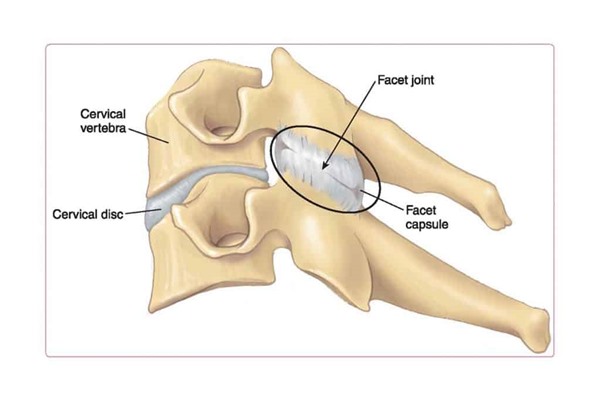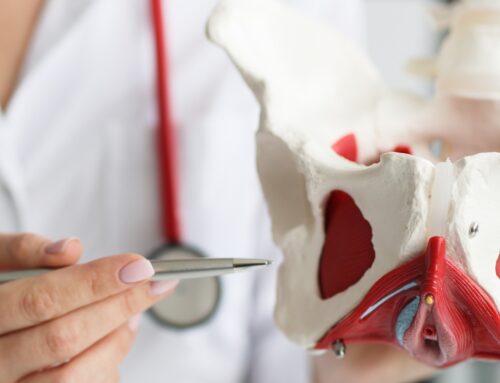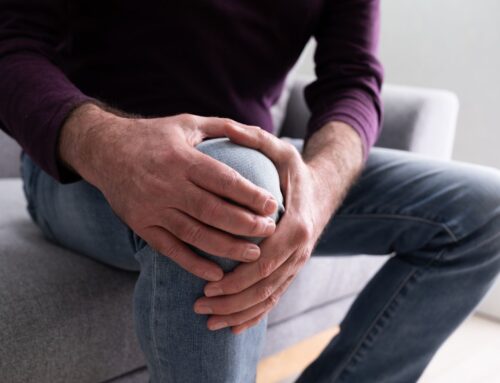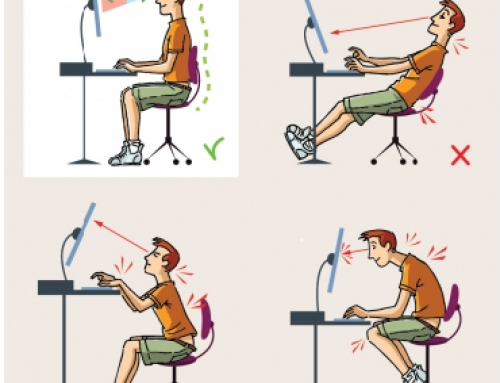I have a crick in my neck.
I slept wrong and now I can’t turn my head.
If you’ve said this then you would also remember the accompanying pain associated with the inability to move your head well.
Neck pain can occur for many reasons. The neck contains several sets of joints located on each side of the neck. They are what connect the vertebrae in the spine allowing them to move. Inflammation in the facet joints can be excruciating and severely impair mobility.
In fact, facet joints run the length of the spine from the neck, midback to the low back.
After the low back, the neck is the second most common location of facet joint syndrome, with a prevalence ranging from 30% to 70% of neck pain cases.¹
I recently woke up feeling pain and stiffness in my neck. By the time I attempted to dress and leave the house, it was a challenge to back out of the driveway. Fortunately, I was able to get in for a massage and chiropractic adjustment.
HOW IT OCCURS
While the crick in the neck may come on all of a sudden, the cause could be from a prior injury, lack of movement, or spinal inflammation.
I learned that the brain sends signals to shut down movement in the area of inflammation. The facet joints control movement up and down, side-to-side, and forwards and backwards. In this case, if the facet joint is inflamed and the body needs it to rest, then rest you should. I was advised to not do stretches which one may be inclined to do. That would result in more aggravation. I learned it may be days and would need to let the area rest.
HELP FOR THE PAIN
I share a few additional tips for managing any resulting pain and soreness from my most recent experience.
- Applying ice to the neck and surrounding muscles will help with inflammation.
- Good pillows help to keep the spine in alignment while at rest. Some options recommended by our chiropractors are a water-filled pillow. A big no-no is sleeping on your stomach as this can cause the neck to be twisted for hours putting strain on the neck muscles. This results in stiff neck muscles in the morning.
- Trigger Point Injections have become a popular treatment option for those with pain, numbness, muscle tenderness and decreased range of motion. Trigger points are hypersensitive, contracted muscles that cause a person pain and tenderness. Trigger points often form as the result of overuse or an injury. A needle is inserted into the painful trigger point to help break up the taut muscle fibers that have caused the trigger point to occur. Medications used include lidocaine (a local anesthetic) and Toradol (a non-steroidal anti-inflammatory similar to Ibuprofen or Tylenol), which work well together as one anesthetizes and the other reduces inflammation.
- A Chiropractic adjustment will assist in creating symmetry in the skeletal system. Being in proper alignment allows the body to move without restriction. Proper spinal facet health is important to maintain because movement of the spine is very complex and necessary. A Chiropractic adjustment ensures spinal health through appropriate motion throughout the spine.
- Massage utilizes several modalities using the hands, a mechanical or electrical apparatus, and stretches to stimulate or soothe soft tissues of the body for therapeutic purposes. Massage works by kneading and stroking muscles to relax them and uses friction to stimulate soft tissues. This therapy can increase blood and lymph circulation while breaking up scar tissue between muscles fibers. Massage is useful in many conditions where a reduction of swelling, a breakdown of scar tissue, and an increased range of motion are desired. Massage can also be helpful in reducing the swelling and pooling of fluids at the site of a recent injury or trauma.
- Strengthening the core to support the spine and neck are also highly recommended. Poor posture and sitting for too long during the day without changing positions can cause strain on the muscles. Our Physical Therapist can show patients core strengthening and stretching exercises to keep the body strong and nimble.
Reference
1. Pope JE, Cheng J. Facet (Zygapophyseal) Intraarticular Joint Injections: Cervical, Lumbar, and Thoracic. Injections for Back Pain. 129-135. ClinicalKey.com. Accessed July 16, 2019.






